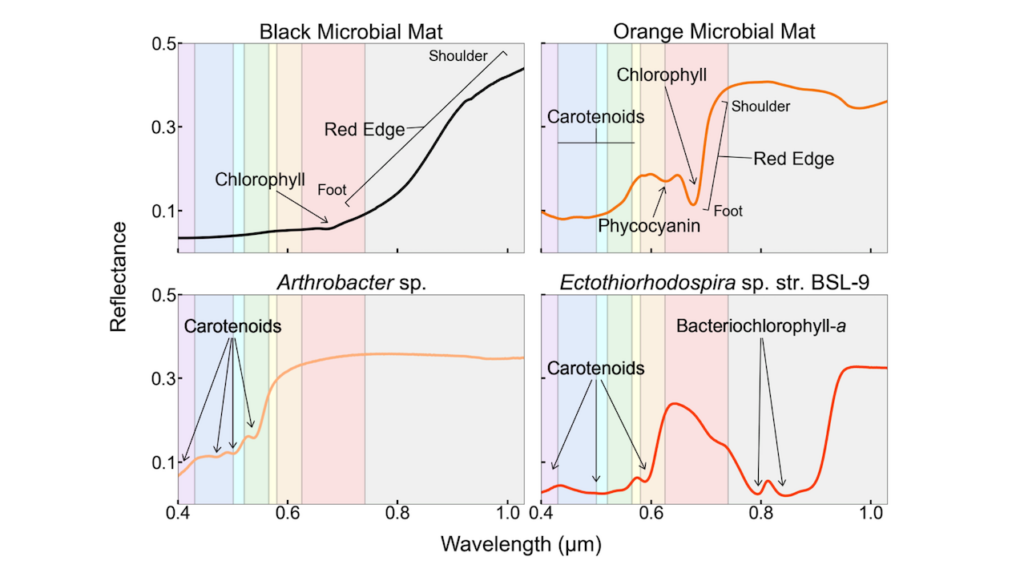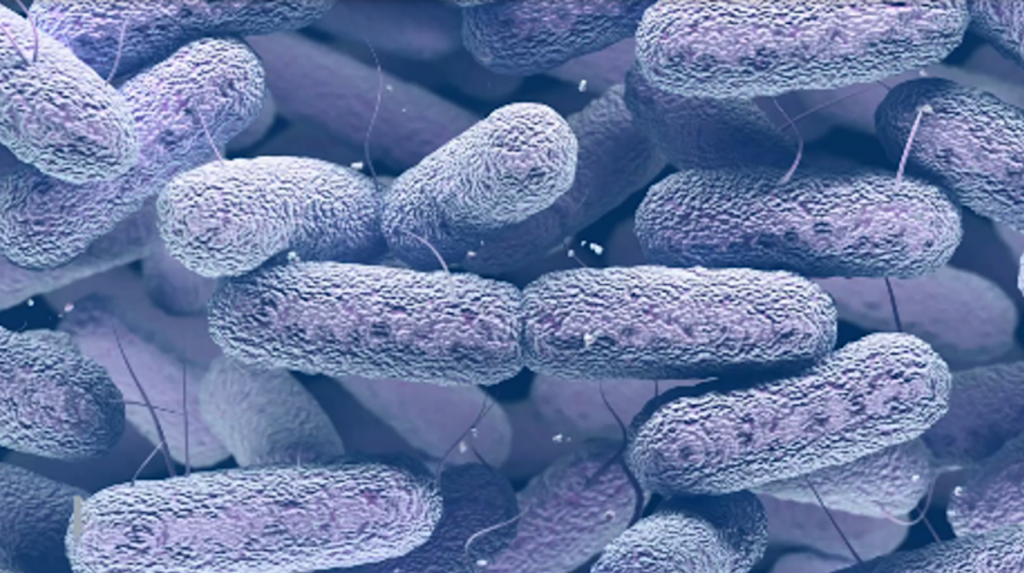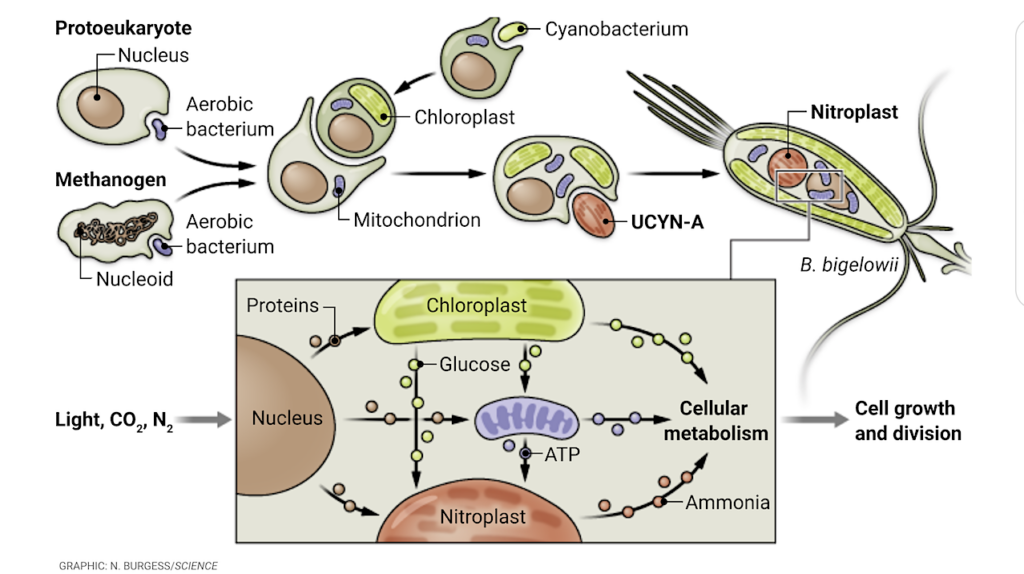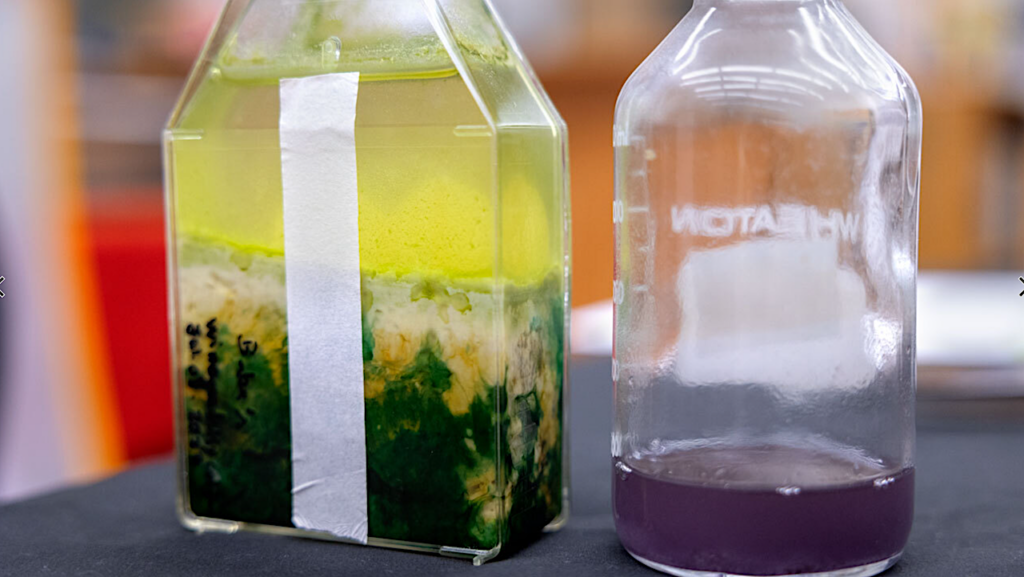NASA Spaceline Current Awareness List #1,086 9 February 2024 (Space Life Science Research Results)

Astronaut Thomas Pesquet works on the Cardinal Muscle investigation in the Life Sciences Glovebox aboard the International Space Station. Credits: NASA
Papers deriving from NASA support:
- Duscher AA, Vroom MM, Foster JS.Impact of modeled microgravity stress on innate immunity in a beneficial animal-microbe symbiosis.Sci Rep. 2024 Feb 5;14:2912.PI: J.S. FosterNote: A rotary culture system was used in this study. This article may be obtained online without charge.
Journal Impact Factor: 4.996
Funding: “The work was also supported by NASA Space Biology grants 80NSSC19K0138 and 80NSSC18K1465 awarded to JSF and a NASA Florida Space Grant Consortium Dissertation Improvement grant awarded to AAD.” - Trappe TA, Minchev K, Perkins RK, Lavin KM, Jemiolo B, Ratchford SM, Claiborne A, Lee GA, Finch WH, Ryder JW, Ploutz-Snyder L, Trappe SW.NASA SPRINT exercise program efficacy for vastus lateralis and soleus skeletal muscle health during 70 days of simulated microgravity.J Appl Physiol (1985). 2024 Feb 8. Online ahead of print.PI: L. Ploutz-SnyderNote: Head-down tilt bedrest study.
Journal Impact Factor: 3.3
Funding: “NNX11AJ62G/National Aeronautics and Space Administration (NASA); UL1TR000071/HHS | NIH | National Center for Advancing Translational Sciences (NCATS).” - Waisberg E, Ong J, Masalkhi M, Mao XW, Beheshti A, Lee AG.Mitochondrial dysfunction in Spaceflight Associated Neuro-Ocular Syndrome (SANS): A molecular hypothesis in pathogenesis.Eye (Lond). 2024 Feb 7.Note: This article is a comment.
Journal Impact Factor: 3.9
Funding: A. Beheshti is affiliated with NASA Ames Research Center. - Adkins AM, Colby EM, Boden AF, Gotthold JD, Harris RD, Britten RA, Wellman LL, Sanford LD.Effects of social isolation and galactic cosmic radiation on fine motor skills and behavioral performance.Life Sci Space Res. 2024 Feb 3. Online ahead of print.PI: L.D. SanfordNote: This article may be obtained online without charge.
Journal Impact Factor: 2.5
Funding: “This work was supported by the National Aeronautics and Space Administration [grant number CBS VNSCOR 80NSSC19K1582].” - Verniani A, Galvin E, Tredinnick S, Putman E, Vance EA, Clark TK, Anderson AP.Features of adaptive training algorithms for improved complex skill acquisition.Front Virtual Real. 2024 Feb 8;5:1322656.PI: A.P. AndersonNote: This article is part of Research Topic “Working Mechanisms of Design Elements to Facilitate Learning in Extended Reality” (https://www.frontiersin.org/research-topics/51041/working-mechanisms-of-design-elements-to-facilitate-learning-in-extended-reality/overview). Additional articles will be forthcoming and may be found in the link to the Research Topic. This article may be obtained online without charge.
Journal Impact Factor: 2.9
Funding: “The author(s) declare financial support was received for the research, authorship, and/or publication of this article. This research was supported by NASA under Grant No. 80NSSC21K1140.” - Chang JHM, Xue Z, Bauer J, Wehle B, Hendrix DA, Catalano T, Hurowitz JA, Nekvasil H, Demple B.Artificial space weathering to mimic solar wind enhances the toxicity of lunar dust simulants in human lung cells.Geohealth. 2024 Feb 1;8(2):e2023GH000840.Note: From the abstract: “During NASA’s Apollo missions, inhalation of dust particles from lunar regolith was identified as a potential occupational hazard for astronauts. These fine particles adhered tightly to spacesuits and were unavoidably brought into the living areas of the spacecraft. Apollo astronauts reported that exposure to the dust caused intense respiratory and ocular irritation. This problem is a potential challenge for the Artemis Program, which aims to return humans to the Moon for extended stays in this decade.” This article may be obtained online without charge.
Journal Impact Factor: 4.8
Funding: “This work was supported by a grant from NASA (80NSSC19M0215; P.I. T. Glotch, Stony Brook University).” - Allbritton-King JD, García-Cardeña G.Endothelial cell dysfunction in cardiac disease: Driver or consequence?Front Cell Dev Biol. 2023 Oct 25;11:1278166.PI: G. García-CardeñaNote: This article is part of Research Topic “Unconventional Roles of Endothelial Cells” (https://www.frontiersin.org/research-topics/47772/unconventional-roles-of-endothelial-cells/overview). This article may be obtained online without charge.
Journal Impact Factor: 5.5
Funding: “The research activities of the authors are supported by grants from the National Institutes of Health (HL152367, HL161090), the National Aeronautics and Space Administration (80ARC022CA007), as well as institutional academic resources (Brigham and Women’s Hospital).” - Ghosh LD, Jain A.The prospects of microphysiological systems in modeling platelet pathophysiology in cancer.Platelets. 2023 Dec 31;34(1):2247489. Review.PI: A. JainNote: This article may be obtained online without charge.
Journal Impact Factor: 3.3
Funding: “The work was supported by the National Aeronautics and Space Administration [80ARC023CA002]; National Heart, Lung, and Blood Institute [R01HL157790]; National Science Foundation [1944322], and Texas A&M University President’s Excellence in Research Award (T32/ X-Grant).” - Tu C, Caudal A, Liu Y, Gorgodze N, Zhang H, Lam CK, Dai Y, Zhang A, Wnorowski A, Wu MA, Yang H, Abilez OJ, Lyu X, Narayan SM, Mestroni L, Taylor MRG, Recchia FA, Wu JC.Tachycardia-induced metabolic rewiring as a driver of contractile dysfunction.Nat Biomed Eng. 2023 Nov 27.PI: J.C. WuNote: From the abstract: “Prolonged tachycardia—a risk factor for cardiovascular morbidity and mortality—can induce cardiomyopathy in the absence of structural disease in the heart. Here, by leveraging human patient data, a canine model of tachycardia and engineered heart tissue generated from human induced pluripotent stem cells, we show that metabolic rewiring during tachycardia drives contractile dysfunction by promoting tissue hypoxia, elevated glucose utilization and the suppression of oxidative phosphorylation.”
Journal Impact Factor: 28.1
Funding: “C.T. discloses support for the research described in this study from the American Heart Association (AHA) (20POST35080175) and the National Institutes of Health (NIH) (K99 HL164962). A.C. discloses support for the publication of this study from AHA (908136). H.Z. discloses support for the publication of this study from AHA (23CDA1050577). O.J.A. discloses support for the publication of this study from the NIH (K01 HL130608). F.A.R. discloses support for the publication of this study from NIH (R01 HL151345). J.C.W. discloses support for the publication of this study from the NIH (R01 HL163680, R01 HL141371, R01 HL113006, R01 HL150693 and P01 HL141084) and the National Aeronautics and Space Administration (80ARC022CA003).” - Ballard R, Parkhurst JT, Gadek LK, Julian KM, Yang A, Pasetes LN, Goel N, Sit DK.Bright light therapy for major depressive disorder in adolescent outpatients: A preliminary study.Clocks & Sleep. 2024 Jan 30;6(1):56-71.PI: N. GoelNote: This article is part of Section “Impact of Light & other Zeitgebers” (https://www.mdpi.com/journal/clockssleep/sections/CS_Zeitgebers). This article may be obtained online without charge.
Journal Impact Factor: 3.1
Funding: “…N.G. was supported in part by National Aeronautics and Space Administration (NASA) (grants NNX14AN49G and 80NSSC20K0243 both to N.G.), and National Institutes of Health (grant NIH R01DK117488 to N.G.). L.N.P. was supported by NASA grant 80NSSC20K0243.” - Walsh K, Cochran JD, Evans MA.Clonal hematopoiesis: Getting to the heart of the problem with clone size.JACC Heart Fail. 2024 Jan 31. Online ahead of print.PI: K. WalshNote: This article is an editorial.
Journal Impact Factor: 13
Funding: “This work was supported by the University of Virginia Medical Scientist Training program T32GM007267 to Mr. Cochran, the National Institutes of Health grants AG073249, HL142650, HL152174, Department of Defense grant CA210887P2, and NASA grant 80NSSC21K0549 to Dr Walsh, and NASA Human Research Program Grant Augmentation 80NSSC21K0549 to Dr Evans.”
Other papers of interest:
- Elias A, Weber T, Green DA, Harris KM, Laws JM, Greaves DK, Kim DS, Mazzolai-Duchosal L, Roberts L, Petersen LG, Limper U, Bergauer A, Elias M, Winnard A, Goswami N.Systematic review of the use of ultrasound for venous assessment and venous thrombosis screening in spaceflight.npj Microgravity. 2024 Feb 5;10(1):14.Note: From the article: “The validity of venous ultrasound (V-US) for the diagnosis of deep vein thrombosis (DVT) during spaceflight is unknown and difficult to establish in diagnostic accuracy and diagnostic management studies in this context. We performed a systematic review of the use of V-US in the upper-body venous system in spaceflight to identify microgravity-related changes and the effect of venous interventions to reverse them, and to assess appropriateness of spaceflight V-US with terrestrial standards.” This article may be obtained online without charge.
- Lee S, Kim G, Lee J, Lee AC, Kwon S.Mapping cancer biology in space: Applications and perspectives on spatial omics for oncology.Molecular Cancer. 2024 Jan 30;23:26. Review.Note: This article may be obtained online without charge.
- Mortazavi SMJ, Said-Salman I, Mortazavi AR, El Khatib S, Sihver L.How the adaptation of the human microbiome to harsh space environment can determine the chances of success for a space mission to Mars and beyond.Front Microbiol. 2024 Feb 7;14:1237564. Review.Note: This article is part of Research Topic “Technologies for Sustainable Space Exploration and Terrestrial Sustainability” (https://www.frontiersin.org/research-topics/48599/technologies-for-sustainable-space-exploration-and-terrestrial-sustainability#overview). The Research Topic also includes articles from previous Current Awareness List #1,079 https://doi.org/10.3389/frspt.2023.1181843 and https://doi.org/10.3389/frspt.2023.1240251. Additional articles will be forthcoming and may be found in the link to the Research Topic. This article may be obtained online without charge.
- Pinczés P, Hirn A, Apáthy I, Deme S, Ivanova O, Pázmándi T, Shurshakov V.Automatic measurements with the Pille-ISS thermoluminescent dosimeter system on board the International Space Station (2003-2021).Life Sci Space Res. 2024 May. Online ahead of print.Note: From the abstract: “The health risk of staying in space is a well-known fact, and the radiation doses to the astronauts must be monitored. The Pille-ISS thermoluminescent dosimeter system is present on the International Space Station (ISS) since 2003. We present an analysis of 60,000 data points over 19 years from the 90 minute automatic measurements and show a 4-day-long segment of 15 min measurements.”
- Cowburn J, Serrancolí G, Pavei G, Minetti A, Salo A, Colyer S, Cazzola D.A novel computational framework for the estimation of internal musculoskeletal loading and muscle adaptation in hypogravity.Front Physiol. 2024 Feb 7;15:1329765.Note: This article is part of Research Topic “Human Movement in Simulated Hypogravity – Bridging the Gap between Space Research and Terrestrial Rehabilitation” (https://www.frontiersin.org/research-topics/37230/human-movement-in-simulated-hypogravity—bridging-the-gap-between-space-research-and-terrestrial-rehabilitation#overview). The Research Topic also includes articles from previous Current Awareness Lists #1,038 https://doi.org/10.3389/fneur.2023.1062349 and #1,055 https://doi.org/10.3389/fphys.2023.1212198. This article may be obtained online without charge.
- Morozumi Y, Mahayot F, Nakase Y, Soong JX, Yamawaki S, Sofyantoro F, Imabata Y, Oda AH, Tamura M, Kofuji S, Akikusa Y, Shibatani A, Ohta K, Shiozaki K.Rapamycin-sensitive mechanisms confine the growth of fission yeast below the temperatures detrimental to cell physiology.iScience. 2024 Jan 19;27(1):108777.Note: This article may be obtained online without charge.
- Evgenidis SP, Karapantsios TD.3D simulation of pulsatile bubbly flow resembling decompression sickness conditions inside a realistic human artery.Exp Comput Multiph Flow. 2024 Jan 8;6(2):135-9.Note: This article may be obtained online without charge.
- Fazzari C, Macchi R, Kunimasa Y, Ressam C, Casanova R, Chavet P, Nicol C.Muscle synergies inherent in simulated hypogravity running reveal flexible but not unconstrained locomotor control.Sci Rep. 2024 Feb 1;14(1):2707.Note: From the abstract: “With human space exploration back in the spotlight, recent studies have investigated the neuromuscular adjustments to simulated hypogravity running. They have examined the activity of individual muscles, whereas the central nervous system may rather activate groups of functionally related muscles, known as muscle synergies. To understand how locomotor control adjusts to simulated hypogravity, we examined the temporal (motor primitives) and spatial (motor modules) components of muscle synergies in participants running sequentially at 100%, 60%, and 100% body weight on a treadmill.” This article may be obtained online without charge.
- Gerzen O, Potoskueva I, Votinova V, Sergeeva K, Tyganov S, Tzybina A, Shenkman BS, Nikitina L.Mechanical interaction of myosin and native thin filament in the disused rat soleus muscle.Life Sci Space Res. 2024 Feb 4. Online ahead of print.
- McCafferty CL, Klumpe S, Amaro RE, Kukulski W, Collinson L, Engel BD.Integrating cellular electron microscopy with multimodal data to explore biology across space and time.Cell. 2024 Feb 1;187(3):563-84.Note: This article may be obtained online without charge.
- Porat A, Rivière M, Meroz Y.A quantitative model for spatio-temporal dynamics of root gravitropism.J Exp Bot. 2023 Jan 10;75(2):620-30.Note: This article may be obtained online without charge.
- Wang H, Wang H, Liu H, Wan T, Li Y, Zhang K, Shabala S, Li X, Chen Y, Yu M.Aluminium stress-induced modulation of root gravitropism in pea (Pisum sativum) via auxin signalling.Plant Physiol Biochem. 2024 Jan;206:108315.








